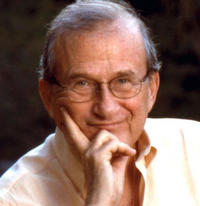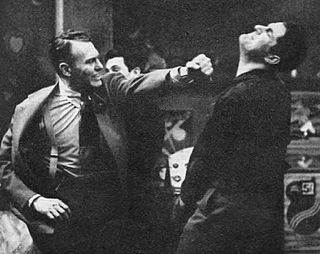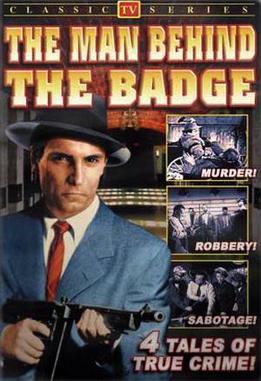Related Research Articles

Larry Simon Gelbart was an American television writer, playwright, screenwriter, director and author, most famous as a creator and producer of the television series M*A*S*H, and as co-writer of the Broadway musicals A Funny Thing Happened on the Way to the Forum and City of Angels.
The year 1957 in television involved some significant events. Below is a list of television-related events during 1957.

Della Reese was an American singer, actress, television personality, author and ordained minister. As a singer, she recorded blues, gospel, jazz and pop. Several of her singles made the US Hot 100, including the number two charting song, "Don't You Know?" (1959). As a television personality and actress, she was the first black woman to host her own talk show and appeared on the highly-rated CBS television series Touched by an Angel.

The Frank Sinatra Show is an ABC variety and drama series, starring Frank Sinatra, premiering on October 18, 1957, and last airing on June 27, 1958.

The NBC Comedy Hour was a comedy show that ran on NBC January 8, 1956 - June 10, 1956, as a replacement for The Colgate Comedy Hour.

Man Against Crime starring Ralph Bellamy, one of the first television programs about private eyes, ran on CBS, the DuMont Television Network and NBC from October 7, 1949, to June 27, 1954, and was briefly revived, starring Frank Lovejoy, during 1956. The show was created by Lawrence Klee and was broadcast live until 1952. The series was one of the few television programs ever to have been simulcast on more than one network: the program aired on both NBC and DuMont during the 1953–54 television season.

Star Time is an American variety series that aired on the DuMont Television Network from September 5, 1950, to February 27, 1951, and starred singer-actress Frances Langford. It was broadcast from 10 to 11 p.m. on Tuesdays.

Suspense is an American television anthology series that ran on CBS Television from 1949 to 1954. It was adapted from the radio program of the same name which ran from 1942 to 1962.

The Man Behind the Badge is a half-hour American television police drama series which aired on CBS from October 11, 1953, to October 3, 1954, originally hosted by Norman Rose. In its second syndicated season, the host became character actor Charles Bickford. Jerry Robinson was the producer.
Club Seven is an American television variety series that was broadcast on ABC. The initial series, with 30-minute episodes, ran from August 12, 1948, through March 17, 1949. It was revived on September 11, 1950, and ran through September 28, 1951. Its episodes varied in length "since it was often truncated by five- or ten-minute newscasts or other series on either end." The show attempted to make viewers feel as if they were in a nightclub.
All About Baby is an American daytime television series offering tips for mothers that aired from October 15, 1954, to July 1955 on several stations of the DuMont Television Network, including flagship station WABD.
The Whistler is a 30-minute syndicated American television anthology mystery series, based on the radio series of the same name.
Mohawk Showroom is an American musical television program that debuted on NBC on May 2, 1949 and ended on November 23, 1951. It was sponsored by Mohawk Carpet Mills Inc. In 1951, the program was one of several NBC-TV shows selected to be shown to United States military personnel overseas via kinescope recordings. The same title was also used for a similar radio program in 1951.
Saturday Night Review is a live American variety television series that was broadcast on NBC in 1953 and 1954 as a summer replacement for Your Show of Shows.
The Gisele MacKenzie Show is an American musical variety television program that was broadcast on NBC from September 28, 1957, to March 29, 1958.
The Patrice Munsel Show is an American television variety show that was broadcast on ABC from October 18, 1957, until June 13, 1958.
The Guy Mitchell Show is an American musical television series that was broadcast on ABC from October 7, 1957, until January 13, 1958.
The Peter Lind Hayes Show is the title of two American television shows and one American radio program. One TV show was a situation comedy broadcast in prime time on NBC in 1950-1951. The other was a daytime variety program on ABC in 1958-1959. The radio program was a weekly variety show on CBS in 1954-1955.
The Amazing Mr. Malone is an American television legal drama that was broadcast on ABC from September 24, 1951, through March 10, 1952. It was the "earliest prime time network dramatic series to feature a lawyer protagonist."
Big Town is an American television dramatic series that was broadcast beginning on October 5, 1950, and ending on October 2, 1956. It began on CBS and moved to NBC in 1954.
References
- 1 2 McNeil, Alex (1996). Total Television: the Comprehensive Guide to Programming from 1948 to the Present (4th ed.). New York, New York: Penguin Books USA, Inc. p. 104. ISBN 0-14-02-4916-8.
- 1 2 3 Brooks, Tim; Marsh, Earle F. (June 24, 2009). The Complete Directory to Prime Time Network and Cable TV Shows, 1946-Present. Random House Publishing Group. p. 156. ISBN 978-0-307-48320-1 . Retrieved December 28, 2024.
- ↑ "What's New". TV Radio Mirror. August 1954. p. 12. Retrieved January 8, 2025.
- ↑ Terrace, Vincent (October 17, 2024). Encyclopedia of Television Subjects, Themes and Settings. McFarland. p. 326. ISBN 978-1-4766-0445-9 . Retrieved December 30, 2024.
- ↑ "Radio-TV Guide". Jet. October 14, 1954. p. 66. Retrieved December 30, 2024.
- 1 2 3 "Tuesday, August 3". Ross Reports. August 1, 1954. p. B. Retrieved January 8, 2025.
- 1 2 3 4 5 6 Smith, Bill (July 17, 1954). "Blue Angel (TV)". Billboard. p. 69. Retrieved December 29, 2024.
- 1 2 3 McCarthy, Elizabeth (October 9, 1954). "Dial and Channel". The Dispatch. Illinois, Moline. p. 14. Retrieved January 8, 2025– via Newspapers.com.
- ↑ "The Incomparable". The Journal Times. Wisconsin, Racine. September 28, 1954. p. 16. Retrieved January 8, 2025– via Newspapers.com.
- ↑ "Tuesday July 13 (Cont'd)". Ross Reports. July 11, 1954. p. B. Retrieved January 8, 2025.
- ↑ "This Week (Cont'd)". Ross Reports. July 4, 1954. p. 109. Retrieved January 8, 2025.
- ↑ "Other Net Changes (Cont'd)". Ross Reports. July 25, 1954. p. 122. Retrieved January 8, 2025.
- ↑ "The Blue Angel". TV Guide. August 14, 1954. p. 21. Retrieved January 8, 2025.
- ↑ "The Blue Angel". Broadcasting. July 12, 1954. p. 12. Retrieved January 11, 2025.
- ↑ "The Blue Angel". Variety. July 14, 1954. p. 31. Retrieved January 11, 2025.